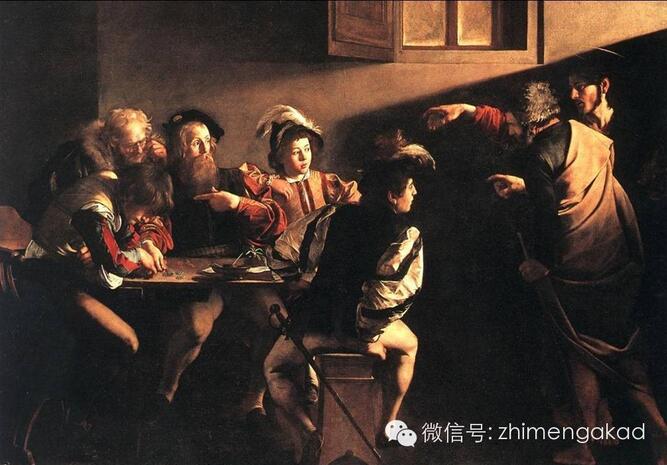【智梦外籍专栏】阿拉伯文化研究+艺术史,我在威廉姆斯的学术经历

小编:又到了我们每周大学专业专栏。这次给我们做分享的是来自威廉姆斯的“全能”外籍 Andy,他不仅阿拉伯文化研究和艺术史双专业,还是威廉姆斯壁球队的队长!那让我们来看看他是如何在全美第一的文理学院里定下专业的。
Andy Maruca
威廉姆斯学院
阿拉伯文化研究和艺术史双专业
威廉姆斯艺术博物馆实习
学校壁球队队长
I was fairly nervous entering Williams College my freshman year. At that time I had only signed up for one course, first-year Arabic, and I was concerned I would be the only one on campus without a chosen direction. It quickly became evident that this was not the case; many of my fellow studentswere struggling to select classes, constantly adding and dropping courses during the first two weeks. To my surprise, this was encouraged. Every semester, there is what we called the Add-Drop Period, a time in which the students are encouraged to experiment and choose what they like. For me, that meant literature, language courses, and, somewhat surprisingly for me, classes in Women’s and Gender Studies.
记得我大一选课的时候还是挺紧张的,很担心我是学校里唯一一个没有确切学科方向的学生,因为在开学之前我只选了一门课—入门级阿拉伯语。然而很快我就发现我的很多小伙伴们同样在为选课纠结着,他们不停地在前两周更换着课表。而让我意想不到的是每学期刚开始,我们都有专门的“换课”周。学校鼓励这种学生不断地根据兴趣换课表,探索并尝试各种课程,各个专业的行为。因此,我好好利用了这个机会,在大学四年里发掘出了我在文学、二外、女性及性别学(women and gender studies)等学科的兴趣。
I stayed largely within these disciplines freshman year, occasionally straying to take classes like intro psych, which happened to be a huge mistake on my part. Unfortunately for students like me, Williams requires everyone to delve into subjects they may not be interested in. For me, this meant I had to take several courses in math and science; I chose calculus, psychology, and astronomy. I achieved success in the latter but struggled with the first two,both classes that, at Williams, were considered large. Introductory Psychology boasts the largest numbers in the entire college (over 100) and, likewise, the highest rate of failure. This was common knowledge; it wasn’t that the coursewas difficult necessarily. The students simply took advantage of its immense size, often sitting in the back chatting or just not showing up at all. Unfortunately, any student will encounter this at any institution, even one like Williams.
对于我上过的课,大部分我都是喜欢的。然而“不幸”的是威廉姆斯作为提倡精英教育的学院,要求我们全面发展,因此需要每个人在每个大领域(数学、自然科学、社会科学、人文科学、语言等)的课都至少体验一下,即使我们不喜欢那些科目。对我来说,数学和科学方向的课就成了我心中的痛。当时我选了代数、心理学和天文学来满足数学科学方向的学分。除了天文学我学的比较好之外,另外两门简直是我的噩梦。由于那两节课都是入门级必修,所以人数都不少。其中入门心理学是全威廉姆斯人最多的(超过100人)课堂,同时挂科率也是最高的,因为即使是在这么好的威廉姆斯(当然以及其他任何学校),还是有不少学生会过来“混”学分,趁着大课坐在后面讲话甚至不来上课。
I knew I needed a small class size, a group of people I’d get to know, instead of a horde of strangers. I could stroll into the professor’s office almost any time I wanted, chat about the homework or, more often, my own interests. I became close with several Arabic professors and the teaching assistants as well. I was certainly not the best student in my Arabic level, but the professors respected my effort and encouraged my exploration of abroader field within Middle Eastern studies. I found I possessed a far greater interest in the politics and culture of the area, reading the texts, both fiction and non-fiction, of just about every well-known author in the region. As a result, it seemed natural that this would be my major, and, as it turned out, it was not the only one.
我知道我喜欢小班教学,想和上课的同学、教授相互认识并且成为朋友,所以只要有空我都会到教授的Office Hour(办公室时间,教授专门留给学生讨论问题的时间)和教授们聊作业和自己的学术兴趣。正因为这样,我和阿拉伯文化研究的几个教授以及助教的关系都非常好。虽然我不是阿拉伯语文化研究课里成绩最好的学生,但是教授们看到了我的努力,所以他们时常鼓励我探索中东文化研究里除了语言以外的其他领域。于是乎通过小说、非小说等阅读,我发现了在中东政治和文化的极大兴趣。因此很自然的,阿拉伯文化就成为我的专业,而且还不是唯一的那一个。
Williams is known for its Art History program, one of the largest at the college, a discipline that works hand-in-hand with two local art museums. I had not considered taking courses in this subject until sophomore year, when I signed up as an after thought. Again, I began in the introductory level, ARTH101, perhaps the class for which Williams is best known. I had one of the oldest and most successful professors at Williams, an elderly man who shuffled slowly back and forth at the front of the room, expounding on the excellence ofeach work of art upon his ancient slideshow. The man had probably never even heard of PowerPoint; he had used the same slides for fifty years, yet the rumor was that he wrote and memorized different lectures every year, remodeling the class again and again. I was impressed. He would talk of the Hagia Sophia (thestructure for which Istanbul is most famous) as if it resembled a lost family member, telling us that he had waited fifty years to see this monument and, upon entering the structure, could not stand; his legs turned to jelly, and he wept on the floor. If I ever feel this much passion regarding any single subject, let alone a singlework of art, I will consider myself to be a success. I envied Professor Johnson and vowed to major in his discipline, because he inspired me more than anyother.
威廉姆斯的艺术史专业非常有名,是学校里面最大的专业之一,并且和当地的两个博物馆都有合作。其实,直到大二我才上了第一节艺术史课,入门课艺术史101(可以说是全威廉姆斯最有名的一节课)。当时给我上课的是全威廉姆斯德高望重的老教授之一,他总是在讲课的时候慢慢地在教室前面左右踱步,用着很古老的幻灯片给我们讲解着一幅幅艺术作品。这位教授也许从来没有听说过ppt,据说他用同样的幻灯片已经五十年,然而每年他都会更新幻灯片内的具体内容并且背下所有不同课程的不同幻灯片。我十分敬佩这位老教授。当他讲到 Hagia Sophia
(伊斯坦布尔最著名景点)时,他的神情与语气,就仿佛在描述与一位多年未见的好友相遇的情景。他等了五十年终于可以去参观这个遗址,而当他最终进入Hagia Sophia 里面的时候,
对于他的所见所感,他激动地热泪盈眶,腿脚几乎无法支撑他的重量。如果我对一个专业有如此的热情,我想我一定是成功的。我非常羡慕Johnson教授的这股热情,也因此十分仰慕他。最后我双专业了艺术史,因为Johnson教授是我的榜样(role model),一直不停的激励着我。
小编:通过不断地尝试不同领域的课程、频繁地在 Office Hour 与教授交流 以及对 Johnson 教授的崇敬,Andy 最终在威廉姆斯选择了阿拉伯文化研究与艺术史双专业。他的方法或许并不唯一,却十分值得我们借鉴,因为他充分利用了学校与教授的资源。
(翻译、编辑/欣茵)